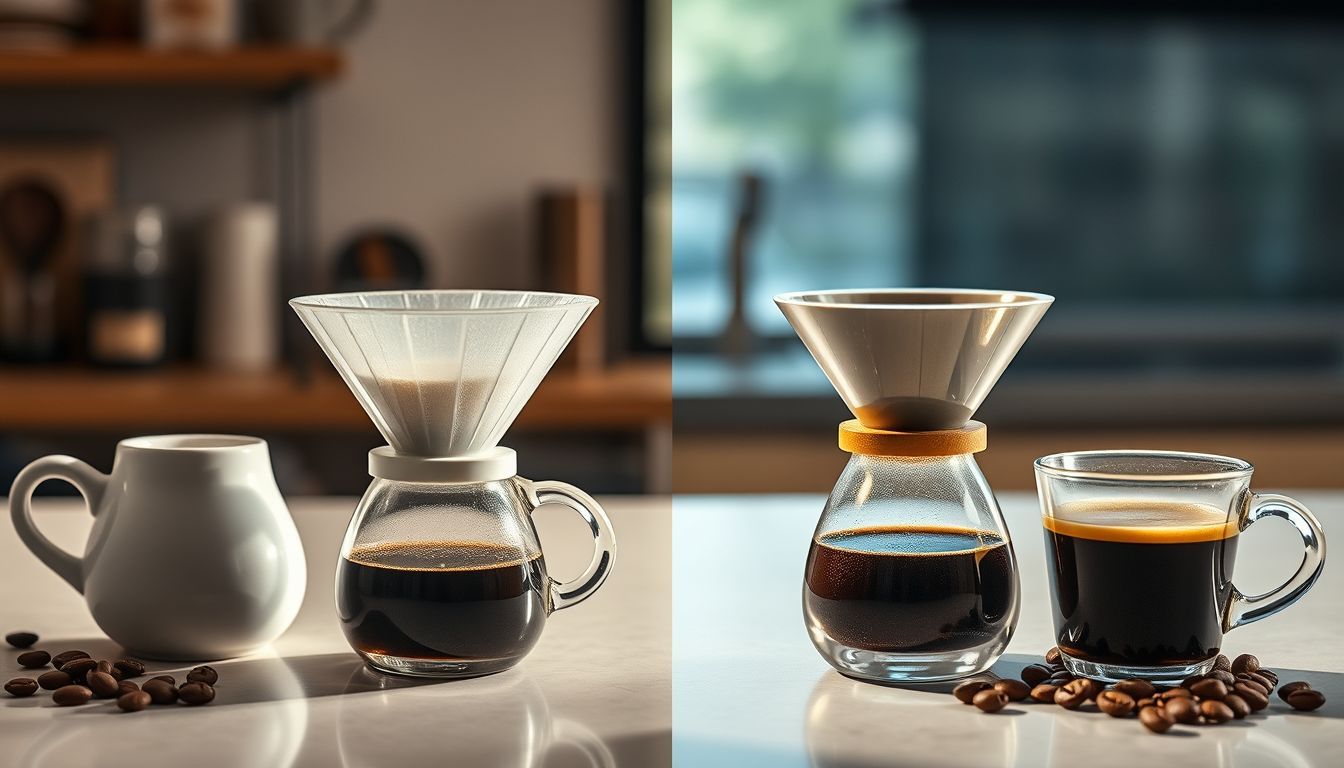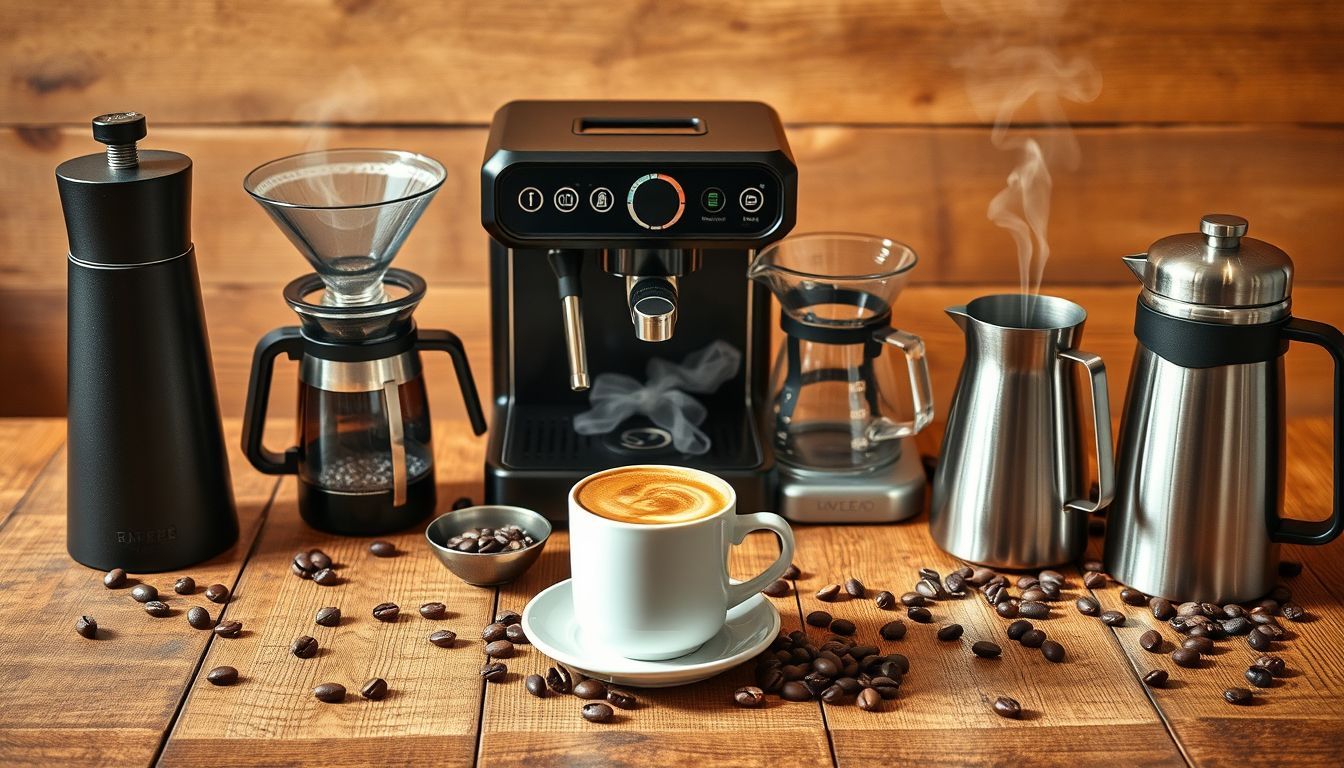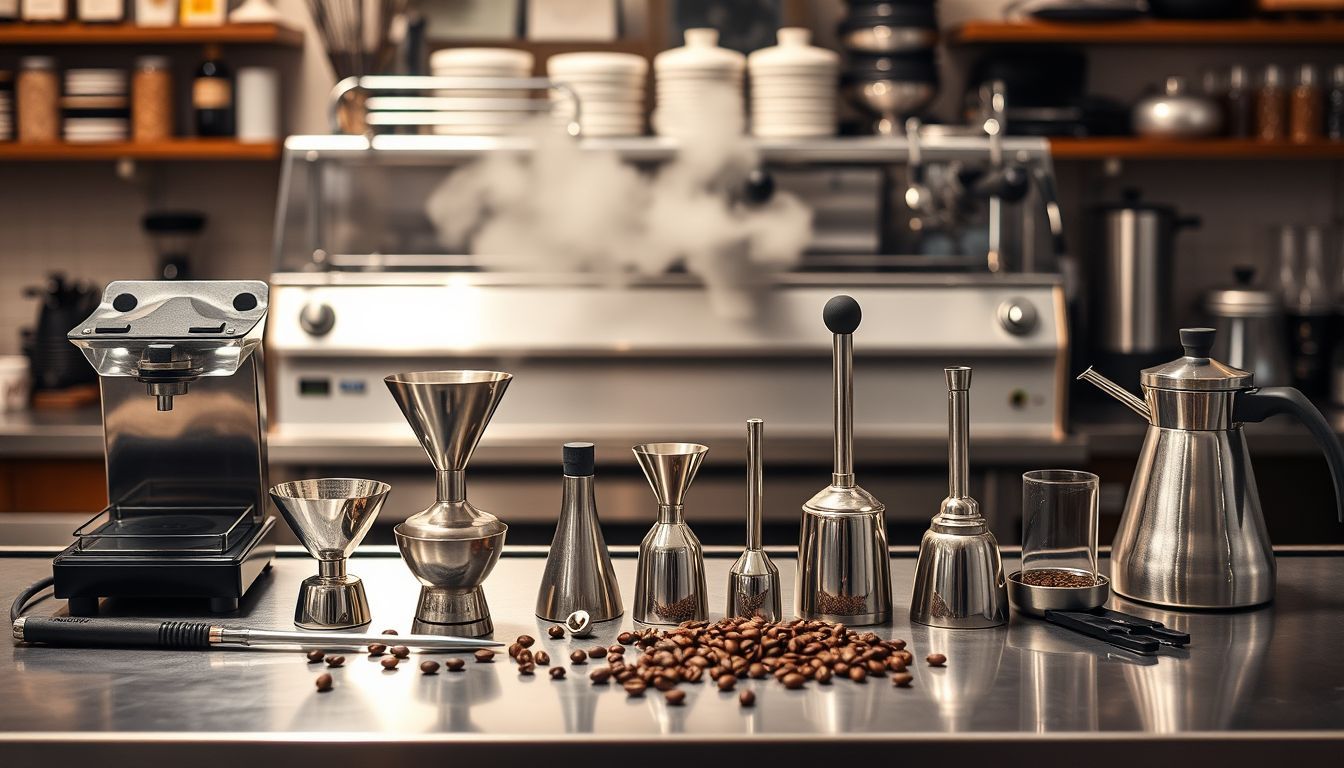Why This $10 Coffee Filter Outperforms $100 Alternatives
I've tested dozens of expensive pour-over devices, but keep returning to a simple $10 plastic dripper. Here's why sometimes the simplest solution is the best one.

Amazon Affiliate Disclosure
This post contains affiliate links. If you purchase through these links, we may earn a small commission at no additional cost to you.
Why This $10 Coffee Filter Outperforms $100 Alternatives
Hey coffee friends! Imani here, and I need to tell you about something that's been sitting on my café counter for three years, quietly making some of the best coffee I've ever served. It's not the shiny $300 ceramic dripper that customers always ask about. It's not the limited-edition copper contraption that looks like modern art. It's a humble Hario V60 Plastic Coffee Dripper that I initially bought as a "backup" and somehow became my go-to brewing device.
Last week, a customer watched me use it to brew his single-origin Ethiopian and said, "Imani, I spent $150 on a fancy dripper last month, and my coffee doesn't taste half as good as this. What am I doing wrong?" The answer surprised him: sometimes the most expensive tool isn't the best tool for the job.
Today, I'm sharing why this unassuming piece of plastic has outperformed every expensive alternative I've tested, and why it might just be the perfect pour-over dripper for most coffee lovers. Spoiler alert: it's not about the price tag – it's about understanding what actually matters in coffee extraction.
The Humble Hero: Hario V60 Plastic Dripper
What Makes It Special (Hint: It's Not the Price)
The Hario V60 Plastic Coffee Dripper looks almost disappointingly simple. It's a cone-shaped piece of clear plastic with spiral ridges on the inside and a large hole at the bottom. No fancy materials, no complex mechanisms, no Instagram-worthy aesthetics. Just pure, functional design that's been perfected over decades.
But here's what that simple design actually accomplishes:
- Perfect 60-degree angle: Optimal for water flow and extraction
- Spiral ridges: Create air channels for even saturation
- Large drainage hole: Allows precise flow rate control
- Lightweight construction: Excellent heat retention without thermal mass
- Clear walls: Let you see exactly what's happening during brewing
The Science Behind the Simplicity
Every element of the V60's design serves a specific purpose in coffee extraction. The 60-degree angle isn't arbitrary – it's the sweet spot for water flow that allows proper contact time without over-extraction. The spiral ridges prevent the filter from sticking to the walls, ensuring even water distribution. The large hole gives you complete control over flow rate.
Meanwhile, many expensive alternatives focus on aesthetics or gimmicky features that don't actually improve the coffee.
The Expensive Alternatives: Where They Fall Short
The Ceramic Beauties ($50-150)
The Promise: Better heat retention and more even extraction
The Reality: Often too much thermal mass
I've tested gorgeous ceramic drippers that look stunning on the counter but actually hurt coffee quality. Ceramic holds heat so well that it can over-extract delicate flavors, especially with lighter roasts. Plus, they take forever to preheat properly.
Customer story: Sarah bought a $120 ceramic dripper because it looked professional. After months of inconsistent results, she tried my plastic V60 and immediately tasted the difference. "It's so much cleaner and brighter," she said. "I can actually taste the coffee instead of fighting with the equipment."
(If you still crave a ceramic option, consider the Hario V60 Ceramic Coffee Dripper in white.)
The Metal Marvels ($80-200)
The Promise: Durability and superior heat conduction
The Reality: Heat conduction works against you
Metal drippers conduct heat away from your brewing coffee, requiring constant temperature management. They're also prone to channeling because water tends to follow the metal ridges rather than saturating evenly.
Real-world test: I compared the same Ethiopian coffee in a $150 copper dripper versus the plastic V60. The copper version consistently produced more bitter, less balanced cups because the metal was pulling heat away from the brewing coffee.
The Glass Showstoppers ($60-120)
The Promise: Pure flavor and visual appeal
The Reality: Fragile and thermally problematic
Glass drippers are beautiful and theoretically flavor-neutral, but they're thermal nightmares. Glass conducts heat away quickly, requiring precise preheating and temperature management. Drop one, and you're out $100+.
Café reality: I went through three glass drippers in my first year. Between thermal shock from rapid temperature changes and the occasional clumsy moment, they just don't survive commercial use.
The Gimmick Gadgets ($100-300)
The Promise: Revolutionary brewing technology
The Reality: Solutions looking for problems
I've tested drippers with built-in agitators, multiple chambers, adjustable flow rates, and other "innovations." Most add complexity without improving the coffee. Some actually make it harder to achieve consistent results.
The truth: Coffee extraction is well-understood science. Most "innovations" are marketing, not improvements.
Why Plastic Wins: The Technical Advantages
Thermal Properties That Actually Help
Plastic is an excellent insulator, which means:
- Stable brewing temperature: Doesn't steal heat from your coffee
- No preheating required: Ready to brew immediately
- Consistent extraction: Temperature stays stable throughout the brew
- Works in any environment: Doesn't change behavior based on room temperature
Practical Durability
In three years of daily café use, my plastic V60 has:
- Survived countless drops (plastic bounces)
- Handled thermal shock without cracking
- Maintained its shape and performance
- Required zero maintenance beyond rinsing
The Forgiveness Factor
Expensive drippers often require perfect technique to shine. The plastic V60 is remarkably forgiving:
- Slight temperature variations: Doesn't dramatically affect extraction
- Pouring inconsistencies: Spiral ridges help even out flow
- Timing variations: Large hole allows adjustment mid-brew
- Grind size tolerance: Works well across a range of grinds
Real-World Testing: The Proof Is in the Cup
The Blind Taste Test
Last month, I conducted a blind taste test with 20 customers using the same coffee in five different drippers:
- Plastic V60 ($10)
- Ceramic V60 ($45)
- Copper dripper ($150)
- Glass Chemex ($50)
- "Premium" metal dripper ($120)
Results: 14 out of 20 people preferred the coffee from the plastic V60. Comments included "cleaner," "brighter," "more balanced," and "tastes like the coffee, not the equipment."
The Consistency Challenge
I tracked extraction consistency over 50 brews with each dripper:
- Plastic V60: 94% of brews within target range
- Ceramic V60: 78% (thermal mass issues)
- Metal dripper: 71% (heat conduction problems)
- Glass dripper: 69% (temperature instability)
The Professional Perspective
I asked five professional baristas to use each dripper for a week and rate their experience:
Unanimous feedback on plastic V60:
- "Most predictable results"
- "Easiest to dial in"
- "Least fussy about technique"
- "Best value for performance"
The Psychology of Price and Performance
Why We Assume Expensive = Better
There's a cognitive bias that makes us believe higher prices indicate higher quality. In coffee equipment, this often leads people to overlook simple, effective solutions in favor of expensive alternatives that don't actually perform better.
The Placebo Effect
I've watched customers convince themselves that their expensive dripper makes better coffee, even when blind taste tests prove otherwise. The price tag creates an expectation that influences perception.
Marketing vs. Reality
Expensive coffee equipment often comes with elaborate marketing about "precision engineering" and "revolutionary design." But coffee extraction follows basic physics – and sometimes the simplest design is the most effective.
When Expensive Equipment Makes Sense
The Exceptions to the Rule
I'm not saying expensive coffee equipment is always a waste. Some categories where price often correlates with performance:
- Grinders: Precision burrs and motors cost money
- Espresso machines: Complex systems require quality components
- Scales: Accuracy and durability improve with investment
Pour-Over Drippers: Different Rules
Pour-over drippers are fundamentally simple devices. They hold a filter and guide water flow. Once you achieve optimal geometry (which the V60 nailed decades ago), additional cost usually goes toward:
- Materials that don't improve performance
- Aesthetics that don't affect taste
- "Features" that complicate rather than improve
Maximizing Your $10 Investment
Getting the Most from Your Plastic V60
Essential accessories (total additional cost: $30-50):
- Paper filters like these Hario V60 Paper Coffee Filters
- A COSORI Gooseneck Kettle for precision pours
- A BAGAIL BASICS Coffee Scale with Timer for consistency
- A good grinder (most important factor)
Technique tips:
- Rinse the filter to remove papery taste
- Use a 1:16 coffee-to-water ratio as starting point
- Pour in slow, circular motions
- Aim for 4-6 minute total brew time
Common Mistakes That Waste the Potential
- Using poor quality coffee: No dripper can fix bad beans
- Inconsistent grind size: Invest in a decent grinder
- Wrong water temperature: 195-205°F is the sweet spot
- Rushing the pour: Slow, controlled pours extract better
- Ignoring ratios: Measure everything for consistency
The Broader Lesson: Value vs. Price
Rethinking Coffee Equipment Purchases
The plastic V60 taught me to evaluate coffee equipment based on:
- Performance: Does it make better coffee?
- Consistency: Can I get the same results repeatedly?
- Practicality: Does it fit my actual brewing habits?
- Value: Performance per dollar spent
Questions to Ask Before Buying Expensive Gear
- What specific problem does this solve?
- Will it actually improve my coffee quality?
- Am I buying performance or aesthetics?
- Have I mastered simpler alternatives?
- Is the price difference justified by results?
The Diminishing Returns Reality
In coffee equipment, there's often a sweet spot where performance peaks before price skyrockets. The plastic V60 sits right in that sweet spot for pour-over brewing.
Building Your Perfect Setup Around Simplicity
The $100 Complete Pour-Over Setup
- Plastic V60 dripper: $10
- V60 paper filters: $8
- Gooseneck kettle: $35
- Digital scale: $25
- Quality coffee: $15
Total: $93 for everything you need to make exceptional pour-over coffee
Upgrading Strategically
If you want to improve this setup, invest in:
- Better grinder: Biggest impact on quality
- Higher quality beans: Fresh, well-roasted coffee
- Water filtration: Clean water makes clean coffee
- Skills development: Practice and education
Don't upgrade: The dripper itself (unless you break it)
The Community Response
Customer Conversions
Since I started recommending the plastic V60 over expensive alternatives, I've had dozens of customers make the switch. The feedback is consistently positive:
- "I can't believe I spent $200 on that ceramic dripper"
- "My coffee tastes better and I'm less stressed about technique"
- "Finally, equipment that just works"
The Barista Perspective
Professional baristas often prefer simple, reliable tools over flashy alternatives. The plastic V60 is standard equipment in many specialty coffee shops because it delivers consistent results without drama.
Changing the Conversation
I love when customers start focusing on coffee quality rather than equipment prestige. The plastic V60 helps shift attention to what matters: beans, grind, water, and technique.
Embracing Practical Excellence
The Liberation of Low Expectations
There's something freeing about using a $10 piece of plastic that outperforms equipment costing 10 times more. It removes the pressure to justify expensive purchases and lets you focus on the coffee itself.
Confidence Through Simplicity
When your equipment is simple and reliable, you develop confidence in your brewing. You're not second-guessing the gear – you're learning to taste and adjust based on the coffee.
The Joy of Efficiency
The plastic V60 represents everything I love about good coffee equipment: it's effective, efficient, and gets out of the way so you can enjoy the coffee.
Final Thoughts: Sometimes Simple Wins
After testing dozens of pour-over drippers ranging from $10 to $300, I keep coming back to that humble plastic V60. It's not the prettiest option on my shelf, and it certainly doesn't have the most impressive price tag. But it consistently makes the best coffee with the least fuss.
This little plastic cone has taught me an important lesson about coffee equipment: performance doesn't always correlate with price. Sometimes the best tool is the one that gets out of your way and lets the coffee shine.
The next time you're tempted by an expensive coffee gadget, ask yourself: "Will this actually make my coffee taste better, or am I just paying for the privilege of owning something expensive?" More often than not, the simple solution is the best solution.
Your coffee doesn't care how much you spent on equipment. It only cares about proper extraction, good beans, and thoughtful technique. The plastic V60 delivers all of that for the price of a couple of café lattes.
What's your experience with simple versus expensive coffee equipment? Have you found any humble tools that outperform their pricey alternatives? Come by the café and let's compare notes – I'm always curious to hear what's working in your home brewing setup!
Keep it simple and delicious,
Imani
P.S. – If you're local and want to try the plastic V60 before buying one, stop by any morning. I'm happy to brew you a cup and show you the technique that's converted so many expensive-dripper owners!

Imani Wells
For years, I found stories in the steam of the espresso machine and the conversations buzzing around my coffee shop. Now, I have the profound joy of putting those everyday moments of connection onto the page for you.


